Abstract
In the present study experiments concerning the conjugation of fluorescein isothiocyanate (FITC) to antibodies, which were previously performed by Goldstein, Slizys and Chase (1961), McKinney, Spillane and Pearce (1964) and Wood, Thompson and Goldstein (1965) are compiled, reproduced, extended and discussed.
The results of the experiments indicate that if a relatively pure IgG, obtained by DEAE Sephadex chromatography, is conjugated with FITC of high quality, a maximal molecular fluorescein/protein (F/P) ratio is reached in a short time if reaction temperature, pH and protein concentration are high. Maximal labelling was obtained in 30–60 minutes at room temperature, pH 9.5 and an initial protein concentration of 25 mg/ml. The separation of optimally labelled antibodies from under- and over-labelled proteins may be achieved by gradient DEAE Sephadex chromatography. Electrophoretically distinct IgG molecules proved to have about the same affinity for FITC. A correlation between the activity of antibodies in fluorescent and precipitation techniques was found.
Full text
PDF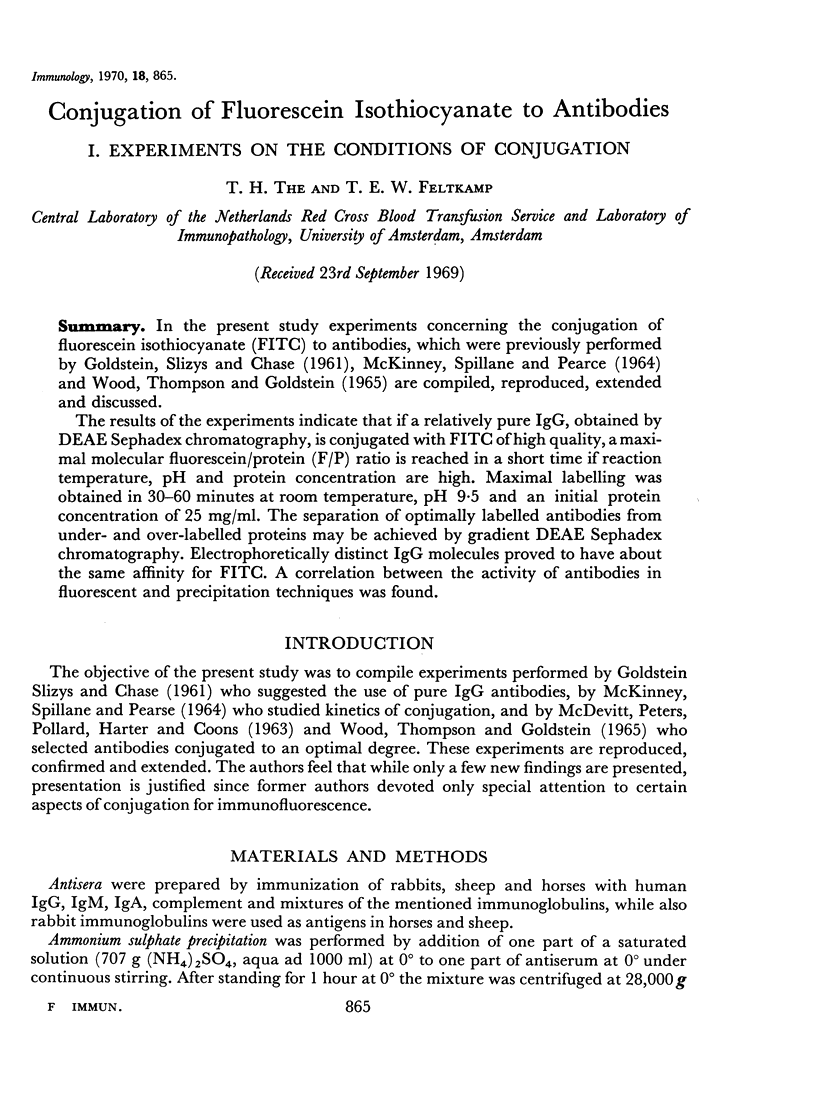
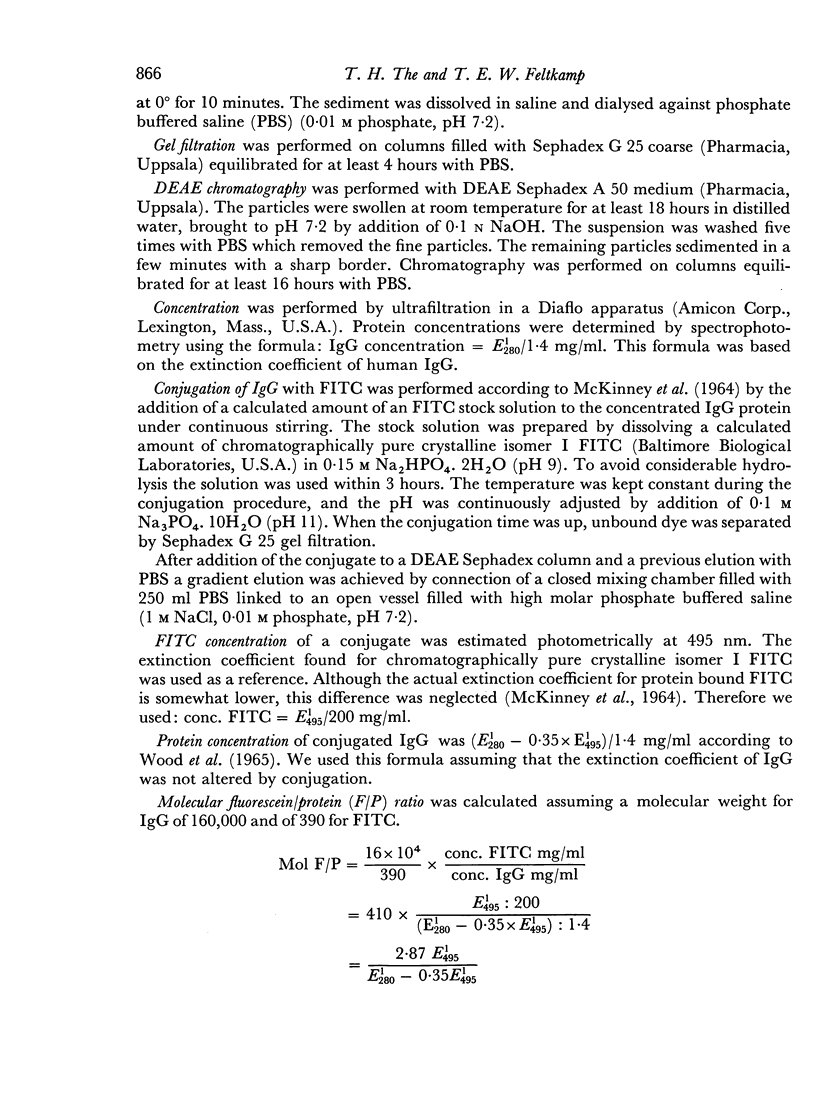
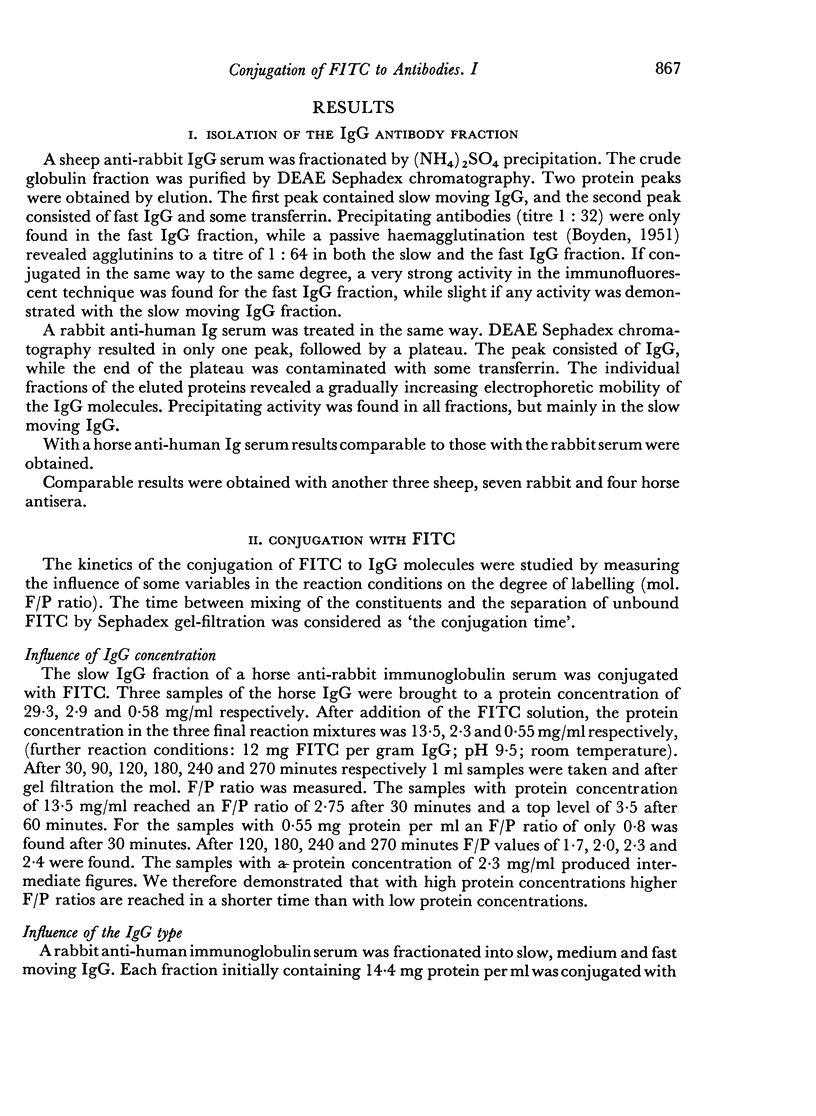
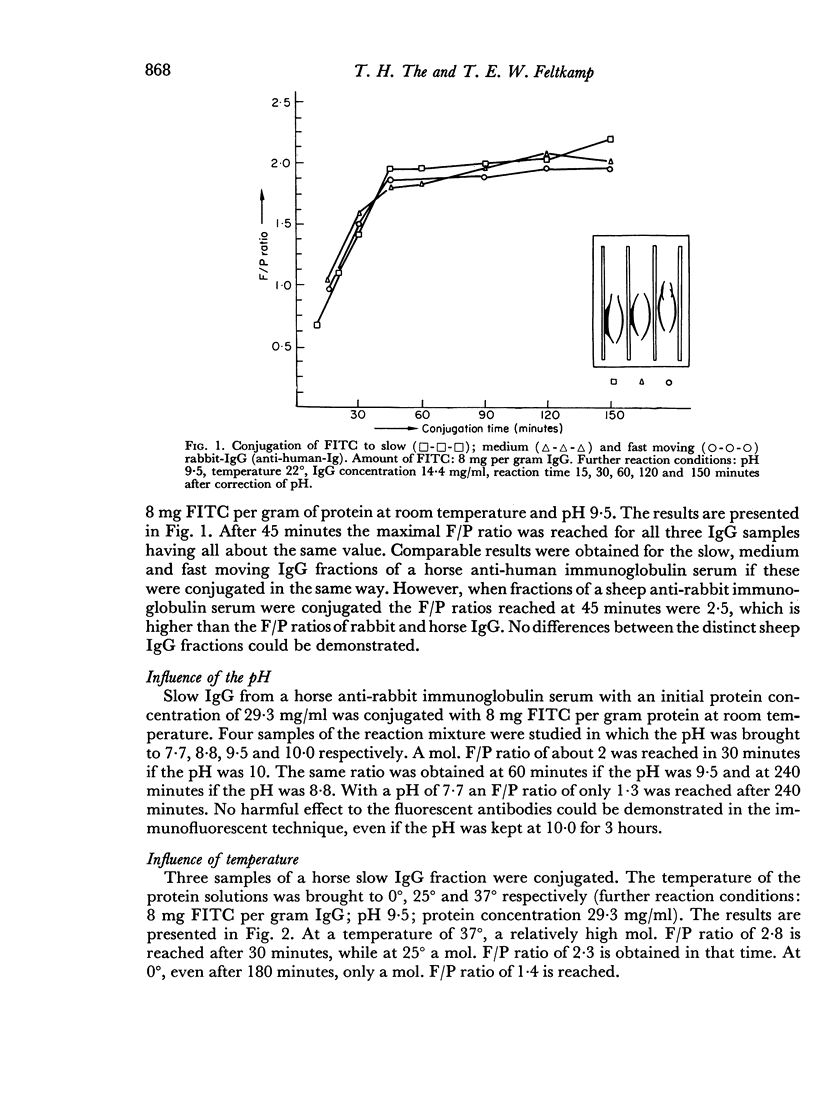
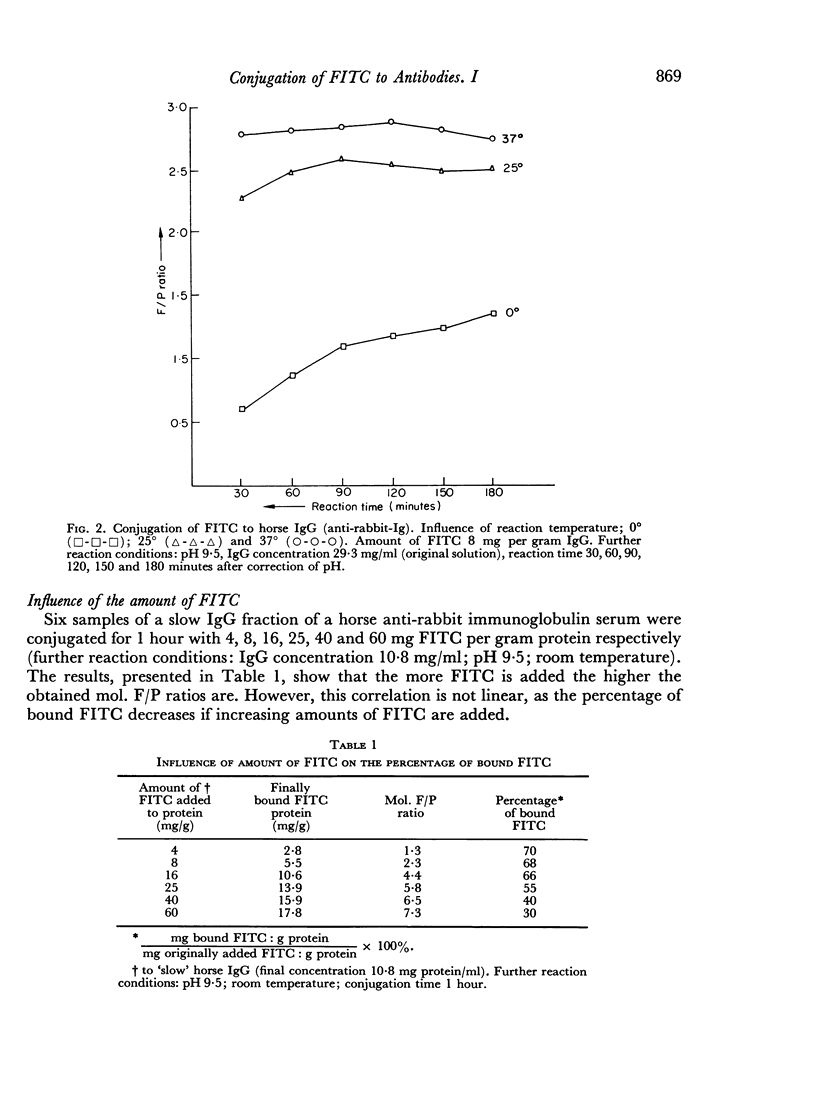
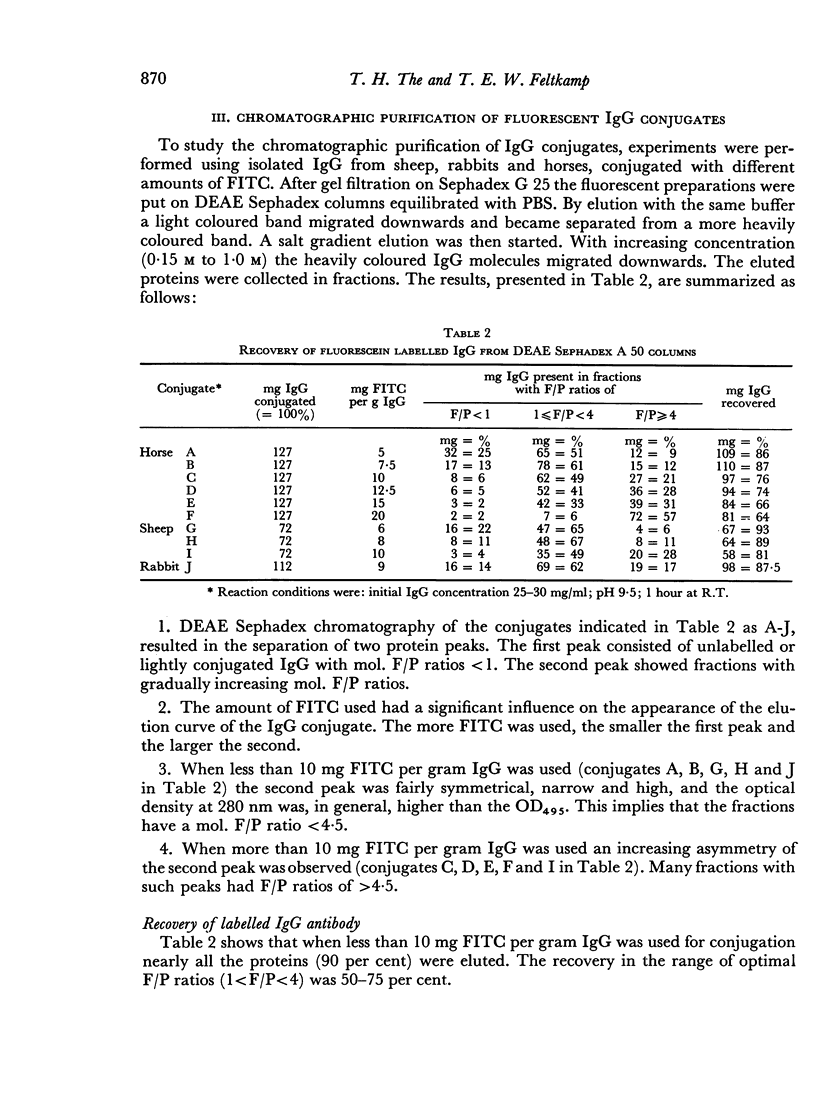
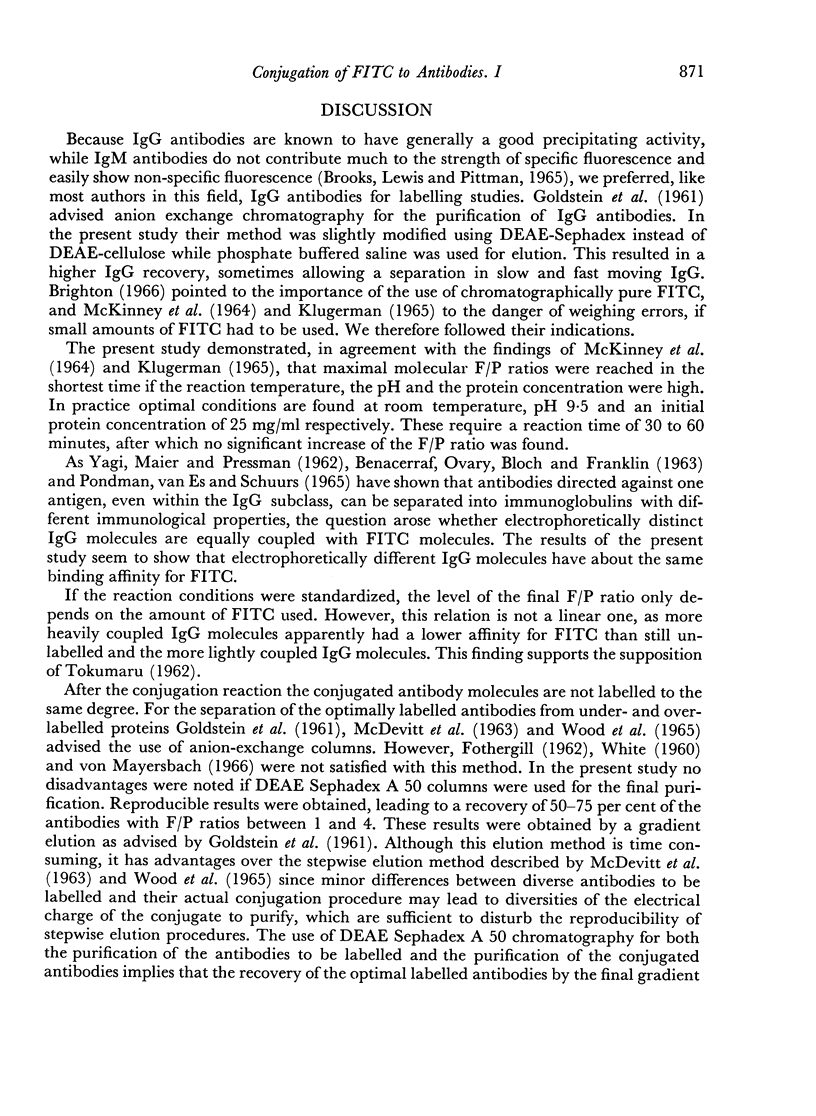
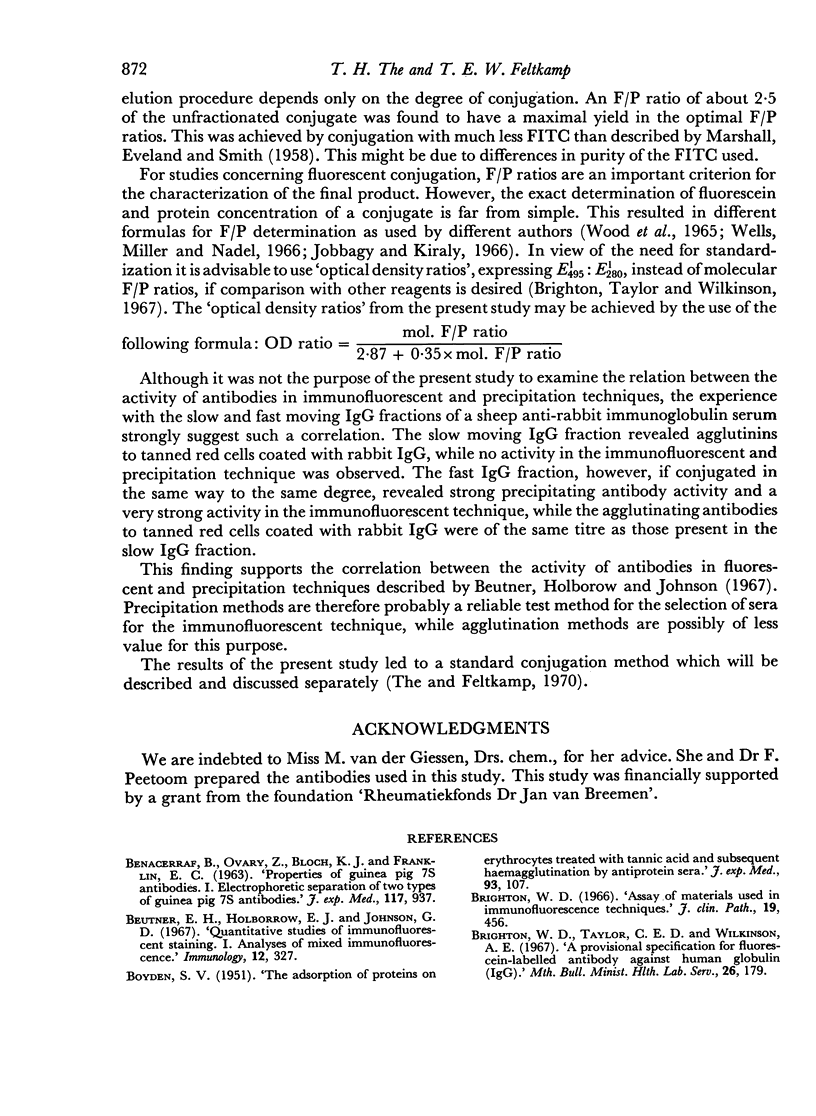
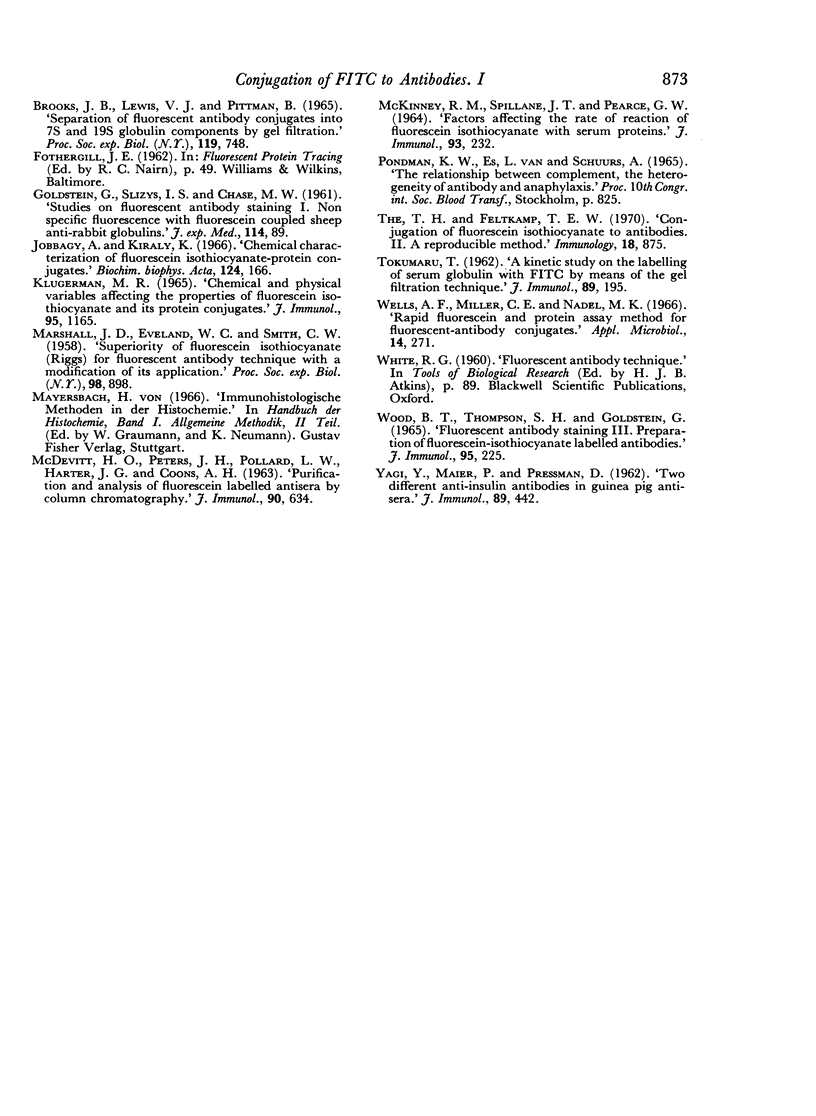
Selected References
These references are in PubMed. This may not be the complete list of references from this article.
- BOYDEN S. V. The adsorption of proteins on erythrocytes treated with tannic acid and subsequent hemagglutination by antiprotein sera. J Exp Med. 1951 Feb;93(2):107–120. doi: 10.1084/jem.93.2.107. [DOI] [PMC free article] [PubMed] [Google Scholar]
- BROOKS J. B., LEWIS V. J., PITTMAN B. SEPARATION OF FLUORESCENT ANTIBODY CONJUGATES INTO 7S AND 19S GLOBULIN COMPONENTS BY GEL FILTRATION. Proc Soc Exp Biol Med. 1965 Jul;119:748–751. doi: 10.3181/00379727-119-30290. [DOI] [PubMed] [Google Scholar]
- Beutner E. H., Holborow E. J., Johnson G. D. Quantitative studies of immunofluorescent staining. I. Analyses of mixed immunofluorescence. Immunology. 1967 Mar;12(3):327–337. [PMC free article] [PubMed] [Google Scholar]
- Brighton W. D. Assay of materials used in immunofluorescence techniques. J Clin Pathol. 1966 Sep;19(5):456–460. doi: 10.1136/jcp.19.5.456. [DOI] [PMC free article] [PubMed] [Google Scholar]
- Brighton W. D., Taylor C. E., Tomlinson A. H., Wilkinson A. E. A provisional specification for fluorescein-labelled antibody against human globulin (IgG). Mon Bull Minist Health Public Health Lab Serv. 1967 Sep;26:179–181. [PubMed] [Google Scholar]
- GOLDSTEIN G., SLIZYS I. S., CHASE M. W. Studies on fluorescent antibody staining. I. Non-specific fluorescence with fluorescein-coupled sheep anti-rabbit globulins. J Exp Med. 1961 Jul 1;114:89–110. doi: 10.1084/jem.114.1.89. [DOI] [PMC free article] [PubMed] [Google Scholar]
- Jobbágy A., Király K. Chemical characterization of fluorescein isothiocyanate-protein conjugates. Biochim Biophys Acta. 1966 Jul 27;124(1):166–175. doi: 10.1016/0304-4165(66)90325-4. [DOI] [PubMed] [Google Scholar]
- Klugerman M. R. Chemical and physical variables affecting the properties of fluorescein isothiocyanate and its protein conjugates. J Immunol. 1965 Dec;95(6):1165–1173. doi: 10.21236/ad0459385. [DOI] [PubMed] [Google Scholar]
- MARSHALL J. D., EVELAND W. C., SMITH C. W. Superiority of fluorescein isothiocyanate (Riggs) for fluorescent-antibody technic with a modification of its application. Proc Soc Exp Biol Med. 1958 Aug-Sep;98(4):898–900. doi: 10.3181/00379727-98-24222. [DOI] [PubMed] [Google Scholar]
- MCDEVITT H. O., PETERS J. H., POLLARD L. W., HARTER J. G., COONS A. H. PURIFICATION AND ANALYSIS OF FLUORESCEIN-LABELED ANTISERA BY COLUMN CHROMATOGRAPHY. J Immunol. 1963 Apr;90:634–642. [PubMed] [Google Scholar]
- MCKINNEY R. M., SPILLANE J. T., PEARCE G. W. FACTORS AFFECTING THE RATE OF REACTION OF FLUORESCEIN ISOTHIOCYANATE WITH SERUM PROTEINS. J Immunol. 1964 Aug;93:232–242. [PubMed] [Google Scholar]
- Pondman K. W., van Es L., Schuurs A. The relationship between complement, the heterogeneity of antibody and anaphylaxis. Bibl Haematol. 1965;23:825–828. doi: 10.1159/000384373. [DOI] [PubMed] [Google Scholar]
- TOKUMARU T. A kinetic study on the labeling of serum globulin with fluorescein isothiocyanate by means of the gel filtration technique. J Immunol. 1962 Aug;89:195–203. [PubMed] [Google Scholar]
- The T. H., Feltkamp T. E. Conjugation of fluorescein isothiocyanate to antibodies. II. A reproducible method. Immunology. 1970 Jun;18(6):875–881. [PMC free article] [PubMed] [Google Scholar]
- Wells A. F., Miller C. E., Nadel M. K. Rapid fluorescein and protein assay method for fluorescent-antibody conjugates. Appl Microbiol. 1966 Mar;14(2):271–275. doi: 10.1128/am.14.2.271-275.1966. [DOI] [PMC free article] [PubMed] [Google Scholar]
- Wood B. T., Thompson S. H., Goldstein G. Fluorescent antibody staining. 3. Preparation of fluorescein-isothiocyanate-labeled antibodies. J Immunol. 1965 Aug;95(2):225–229. [PubMed] [Google Scholar]
- YAGI Y., MAIER P., PRESSMAN D. Two different anti-insulin antibodies in guinea pig antisera. J Immunol. 1962 Sep;89:442–451. [PubMed] [Google Scholar]


